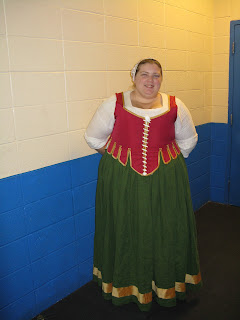I did a small repeat of the pattern in the silk months ago and haven't touched it since because the pattern, to my mind, wasn't working the way that I wanted it to. Most of the lines were too narrow, the blue tails didn't read well, and the flowers were overly complicated and frail. Brocading really seems to work best with strong diagonal lines of 2 threads or greater, which meant that the backs of the birds were reading very well (I loved how that part was turning out) but the rest was just kind of blah.
So, after looking at it in my apartment for months, I'm finally trying to come up with solutions. The benefits of brocading are in its flexibility. I can start over at any point with a completely new design if i so chose. I started by strengthening some of the lines on the magpie and making the whole outline black instead of black and blue.
Then, I played around with the idea of taking out the 3-flower motif completely, as it had the thinnest lines and had more complication than I was really willing to put the effort into as a result. The resulting bird-small flower-bird was too bottom heavy to use on its own, so I tried a bit of inverted tiling:
I thought I'd love this, but I merely like it. It has nice strong diagonals, but I found I missed the larger flower motif. So I tried to fill out the design a little more, while not making it quite as compact since that was making the weaving process with two colors difficult. The results:
I think this might work. There is a lot more white space (re: space I don't have to weave) which makes it a little simpler while still maintaining most of the integrity of the original design Several of the lines are thicker to keep it from being so frail. I won't really know until I start weaving it, but I'm hoping this will be a winner.
I'm also considering playing around with having a thicker line of brocading thread by waxing and doubling up the black and blue strands so they'd act a little more like a ribbon and better fill the space. I'm searching for my motivation to do so, but it'll come. Hopefully.









